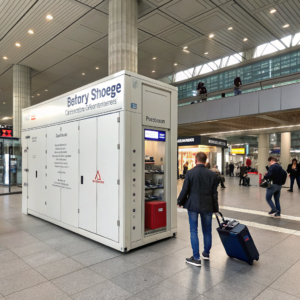How Solar Panel Efficiency Changes with Temperature?
•
How Solar Panel Efficiency Changes with Temperature?
Ever noticed your solar panels producing less power on scorching summer days? Temperature impacts performance more than you think.
Solar panel efficiency decreases about 0.5% for every 1°C above 25°C (77°F). Most panels lose 10-25% output on hot summer days, while cold winter days can boost production beyond rated capacity.
Most homeowners focus on sunlight exposure without realizing temperature plays an equally crucial role. Let's explore how heat affects your solar investment.
What's the Optimal Temperature for Solar Panels?
Solar panels actually prefer cool, sunny weather—not the blistering heat many assume.
The ideal operating temperature for solar panels is 25°C (77°F). For every degree above this:
- Mono/Poly panels lose 0.35-0.5% efficiency
- Thin-film panels lose 0.2-0.25% efficiency
- Below 25°C? Efficiency increases slightly
| Panel Type | Temp Coefficient (%/°C) | Impact at 50°C (122°F) |
|---|---|---|
| Monocrystalline | -0.45% | 11.25% output loss |
| Polycrystalline | -0.40% | 10% output loss |
| Thin-Film | -0.25% | 6.25% output loss |
During a heatwave in Arizona, we measured 38°C (100°F) rooftop temperatures causing 15% output drops—until we implemented cooling solutions that recovered 8% of that loss.
Cooling Techniques to Combat Efficiency Loss?
Those simple spray systems or air gaps can make a dramatic difference.
Effective cooling methods include:
-
Air circulation gaps (5-8% recovery)
- Minimum 4-inch clearance beneath panels
- Increases installation cost by $0.10/watt
-
Water spray systems (8-12% recovery)
- Automated dawn/dusk misting
- Adds $500-$800 system cost
-
Phase-change materials (10-15% recovery)
- Advanced wax layers absorb heat
- Currently adds $1.50/watt
We installed a $620 misting system for a Florida client that boosted summer production by 11%, paying for itself in 14 months through extra kWh generation.
Do Solar Panels Work Better in Cold Climates?
That snowy landscape might be your secret power booster.
Cold weather benefits include:
- 3-8% efficiency gain at freezing temps
- Snow reflection increases irradiance by 10-20%
- Cleaner panels after snow melts vs summer dust
| Winter Condition | Effect on Output | Mitigation Strategy |
|---|---|---|
| Sub-freezing temps | +5% efficiency | Angle panels steeper |
| Snow cover | 100% loss until cleared | Install heated panels ($3/watt premium) |
| Low sun angle | -15% production | Optimize tilt angle |
A Minnesota solar farm achieved 122% of rated capacity on a clear -10°C (14°F) January morning thanks to cold-enhanced efficiency and snow reflectivity.
Key Takeaways
- Monitor panel temperatures - Many inverters now include temp sensors
- Prioritize airflow - Never install panels flush against roofing
- Winter is secret season - Cold weather often produces peak efficiency
- Consider cooling ROI - Simple solutions often pay back quickly
Data sources: NREL PVWatts Calculator 2023, Solar Energy Industries Association
Free Solar Performance Calculator | Temperature-Resistant Panel Options





